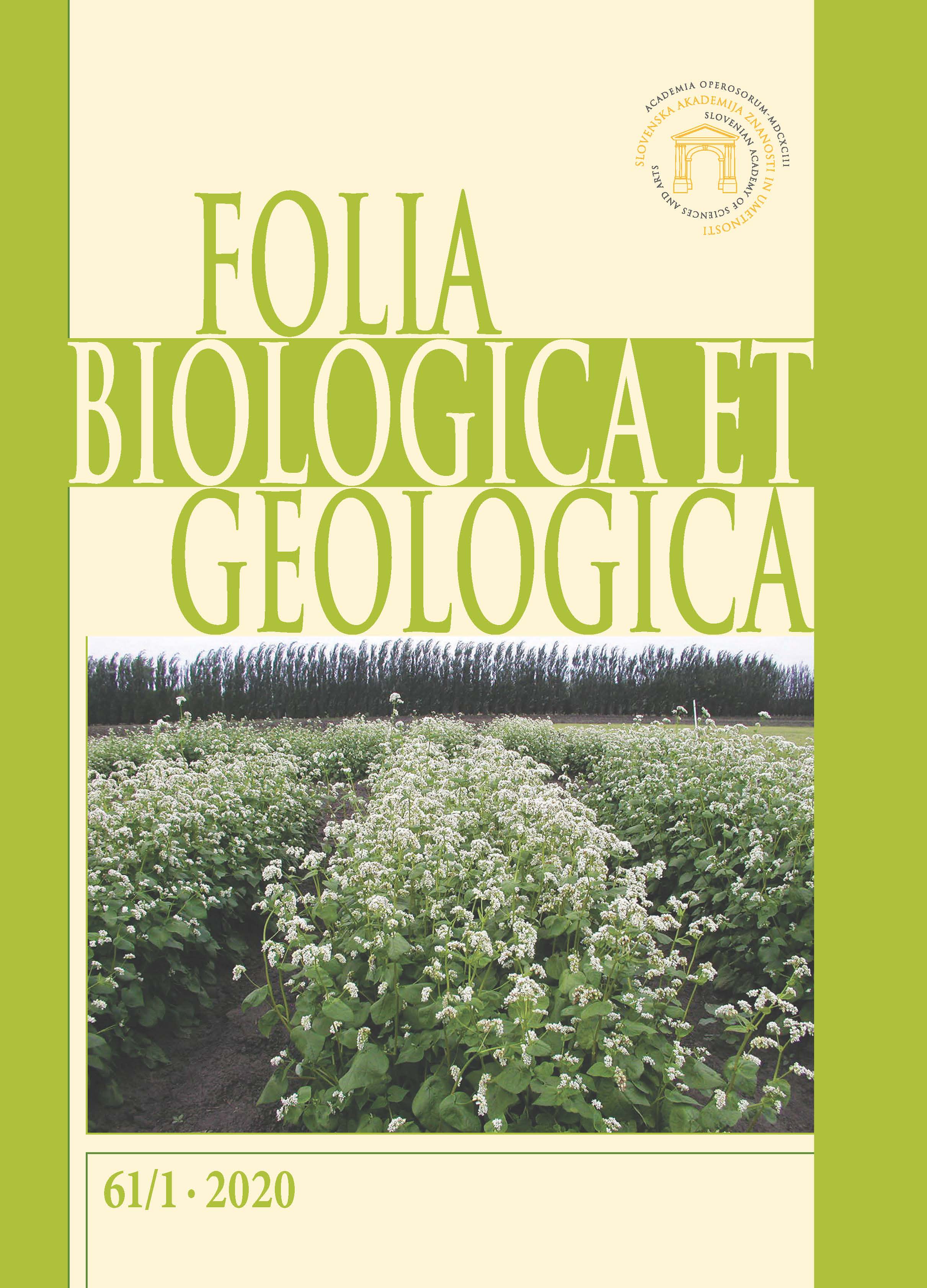UV absorbing compounds in buckwheat protect plants and provide health benefit for humans / UV absorbirajoče snovi v ajdi ščitijo rastline in prispevajo k zdravju ljudi
DOI:
https://doi.org/10.3986/fbg0070Abstract
Buckwheat became a pan-Eurasian crop, when it expanded via Himalaya to Europe. Common buckwheat is one of the oldest domesticated crops in Asia, while Tartary buckwheat is still thriving as a wild or weedy plant. Buckwheat belongs to dicotyledonous crops that can tolerate poor soils and extreme environment conditions. Buckwheat grows on high elevation, where the intensities of UV radiation are usually high. Buckwheat is a fast-growing plant rich in flavonoids, which absorb UV radiation and have an antioxidant potential. Flavnoids have positive effect also on human health. Besides common buckwheat flour, Tartary buckwheat flour is more and more used in preparing dishes, due to its much higher content of flavonoids rutin and quercetin compared to common buckwheat. Therefore, the studies on how the technological procedures of preparing Tartary buckwheat bread affect the content, availability and efficacy of flavonoids in buckwheat bread have been made. Buckwheat is commonly used in the dishes in Japan (soba noodles), China (buckwheat noodles), Korea (buckwheat noodles), Italy (buckwheat polenta), France (galettes), Slovenia (kasha, žganci). Common buckwheat and Tartary buckwheat are plants suitable for designing foods with good functional value and healthy features. Therefore, it has been determined that different technological procedures, such as hydrothermal treatment of grain, sourdough fermentation, dough preparation and baking influences the availability and changes in the content of flavonoids, rutin and quercetin and antioxidant activity in sour bread and food products, made with buckwheat flour.
Key words: Common buckwheat, Tartary buckwheat, sourdough bread, rutin, quercetin, flavonoids, UV absorbing compounds
Izvleček
Ajda je postala vseevrazijska kultura, ko se je preko območja Himalaje razširila v Evropo. Navadna ajda je ena najstarejših gojenih rastlin v Aziji, medtem ko tatarska ajda še vedno uspeva tudi kot divja ali plevelna rastlina. Ajda spada med gojene dvokaličnice, ki lahko prenašajo slaba tla in ekstremne razmere v okolju. Ajda raste na visoki nadmorski višini, kjer je intenziteta ultravijoličnega sevanja običajno visoka. Ajda je hitro rastoča rastlina, bogata z flavonoidi, ki absorbirajo UV sevanje in imajo antioksidativni potencial. Flavonoidi pozitivno vplivajo tudi na zdravje ljudi. Poleg moke iz navadne ajde se moka iz tatarske ajde vse pogosteje uporablja pri pripravi jedi, ker ima v primerjavi z navadno ajdo veliko večjo vsebnost flavonoidov kot sta rutin in kvercetin. Zato so bile narejene študije o tem, kako tehnološki postopki priprave kruha iz tatarske ajde vplivajo na vsebnost, razpoložljivost in učinkovitost flavonoidov v ajdovem kruhu. Ajdo je zelo pogosto uporabljajo v jedeh na Japonskem, na Kitajskem, Koreji, v Italiji, v Franciji, Sloveniji. Navadna ajda in tatarska ajda, sta rastlini primerni za pripravo živil z dobro funkcijsko vrednostjo in lastnostmi ugodnimi za zdravje. Ugotovljeno je bilo, da različni tehnološki postopki, kot so hidrotermična obdelava zrnja, mlečnokislinska fermentacija, priprava testa in peka, vplivajo na dostopnost in spremembe v vsebnosti flavonoidov, rutina in kvercetina in antioksidativno aktivnost kislih kruhov in prehranskih izdelkov pripravljenih iz ajdove moke .
Ključne besede: navadna ajda, tatarska ajda, kruhi s kislim testom, rutin, kvercetin, flavonoidi, UV absorbirajoče snovi




